Do you want to know how you can get stronger, with yoga? You’re in the right place. In this article, we'll explore how to practice yoga as a form of strength training and the best yoga poses to build upper and lower body strength.
Yoga is more than just deep stretching. When we roll out our mats, we balance on one leg, bear weight on the upper body, and turn our bodies upside down. All of this requires significant muscle strength!
While many yoga poses demand muscle endurance, just how good is is yoga at building strength? Find out below!
Article content:
(Click any link below to jump directly to section)
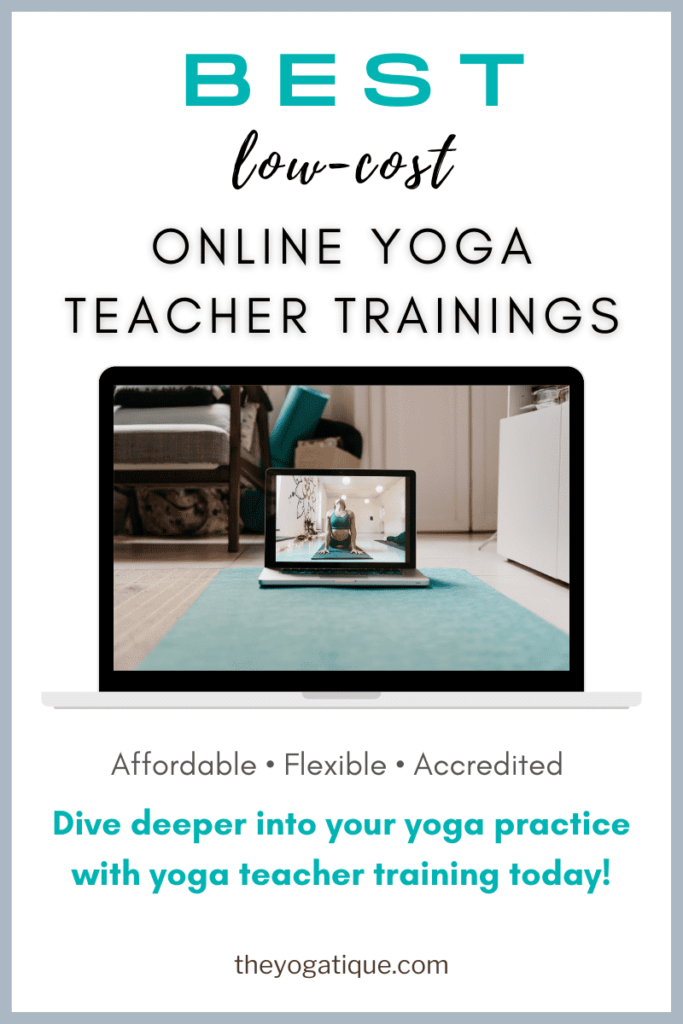
ARE YOU CURIOUS ABOUT YOGA TEACHER TRAINING?!
Online Yoga Teacher Training Offers
- Affordability
- Flexibility
- Certification
- Lifetime access
⬇Click below to discover the best Yoga Alliance registered online YTT's that are under $500⬇
How to build strength with yoga
When I first started yoga, I practiced both Vinyasa and Iyengar. Combining these contrasting styles helped improve my full-body strength and general fitness level.
If the focus of your yoga practice is to increase physical strength, I suggest you include a lot of poses where you use your own body weight to hold yourself up, such as:
- Planks
- Arm balances
- Inversions
Aside from doing those types of poses, you can also increase their muscle-building capabilities by:
- Doing more repetitions
- Holding the poses for longer
10 best yoga poses increasing overall body strength
Many postures engage multiple muscle groups. These ten poses will work all of the major muscle groups to increase your total body strength:
- Downward Facing Dog
- Plank Pose
- Side Plank
- Dolphin Pose
- Crow Pose
- Boat Pose
- Triangle Pose
- Warrior 2
- Warrior 3
- Chair Pose
1. Downward Facing Dog
Downward facing dog is a foundational yoga pose that builds strength in the entire body and is accessible to anyone, regardless of how weak or unfit you feel. By doing this yoga pose daily, you'll soon notice you're building the strength required to attempt more challenging poses. Here's how to do Downward Facing Dog:
- Begin in a kneeling position with your hands under your shoulders and knees under your hips.
- Press your hands firmly into the ground as you tuck your toes and lift your knees.
- Press your hips back as you straighten your legs as much as possible, lifting the hips high and pressing the chest to the thighs.
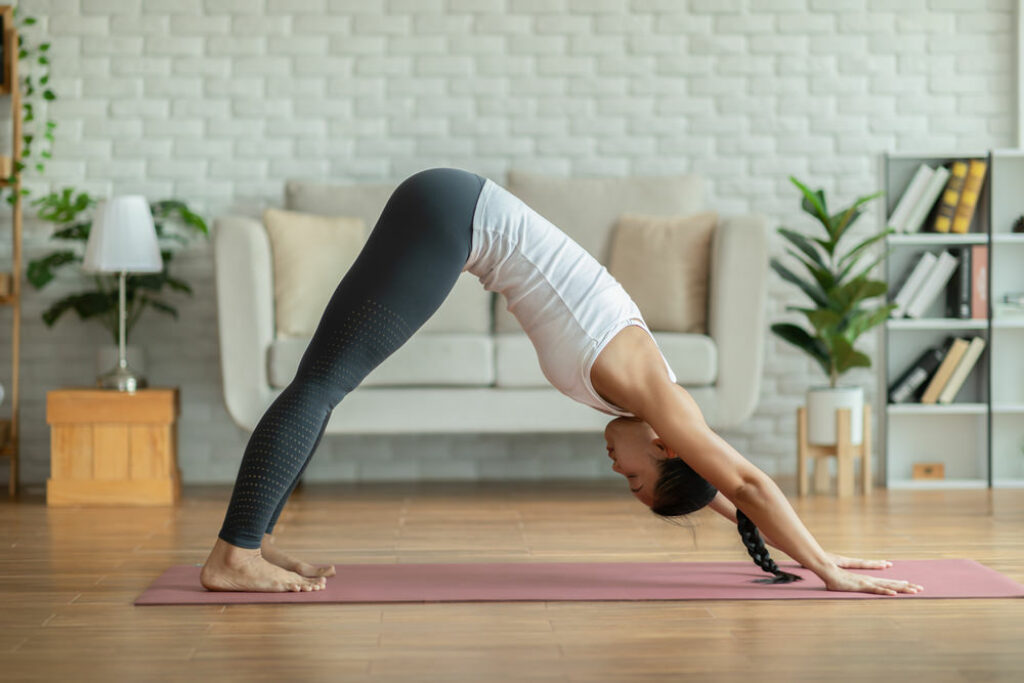
2. Plank pose
Plank pose engages many muscle groups in the upper body, including the triceps, biceps, and deltoids, while also requiring the stabilizer muscles in the abs to turn on. Thus, this pose is equally beneficial for building arm, shoulder, and core strength. Here's how to do Plank pose:
- From a downward dog position, firmly engage your shoulder and core muscles as you rock your body weight forward, bringing the shoulders over the wrists and hips in line with the body.
- Press your hands firmly into the ground, push your heels away from you, and maintain core engagement to prevent the hips from dropping.
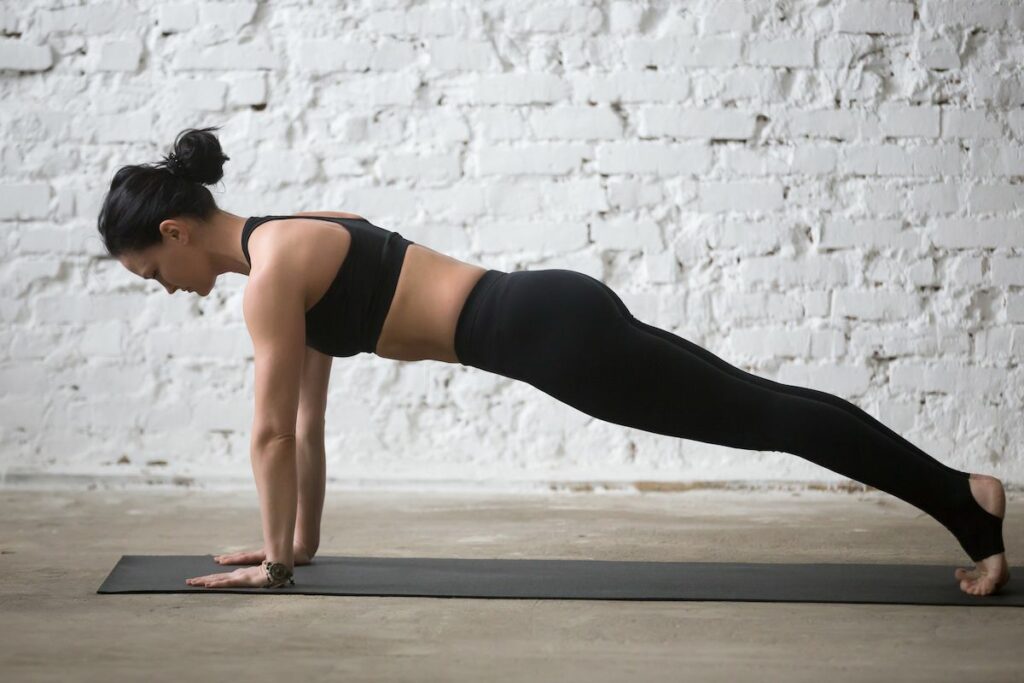
3. Side Plank
Side planks are great for strengthening the side core muscles (internal and external obliques) and the shoulders (deltoids). Here's how to do Side Plank:
- From a Plank pose, shift your weight into your right arm.
- Swivel your feet to the right, bringing the edge of the right foot onto the ground and the left foot stacking over it.
- Open your chest and hips to the side as you extend the top arm. Ensure both legs remain stacked.

4. Dolphin Pose
Dolphin pose is incredibly strengthening for the entire upper body, especially the shoulders. It also tones the core and back muscles while strengthening the quads. To do Dolphin pose:
- From a tabletop position, bend your elbows to bring the forearms to the mat (palms facing down). Let your head hang between your arms.
- Tuck your toes, lift your knees, and press your hips back like you are doing downward dog.
- Walk your feet as close to your body as you can (heels lifted), lifting the hips and keeping the legs straight. When your knees start to bend, stop here.
- Actively press your forearms into the ground as you hold the pose.
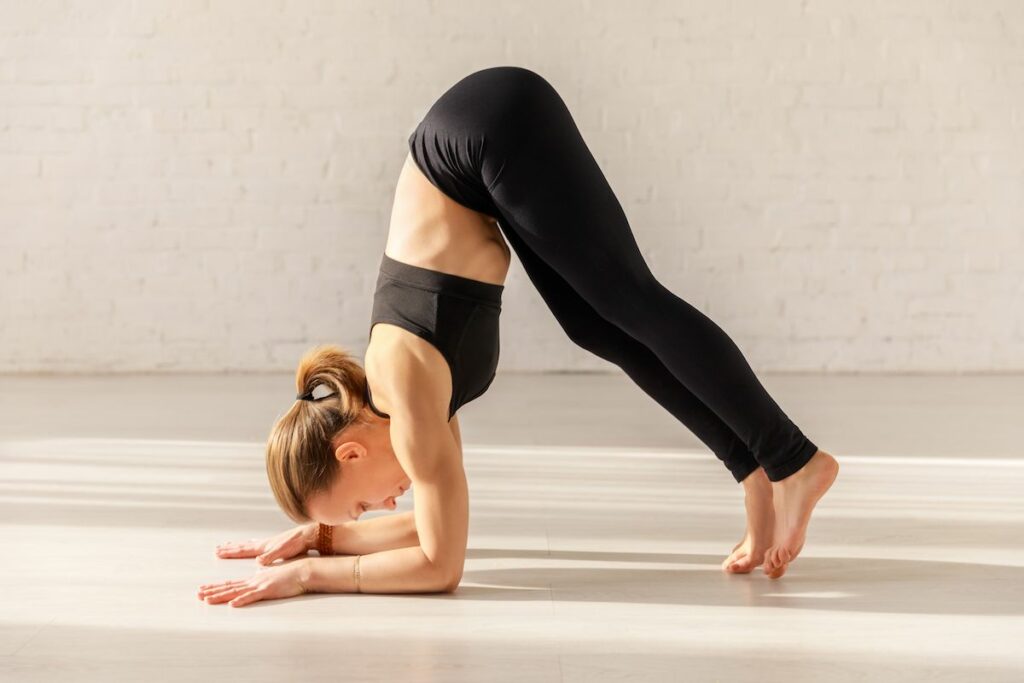
5. Crow Pose
In Crow pose, 100% of your weight is held up by your arms, making it a top posture for building strength in the arms, wrists, shoulders, and upper back. Here's how to do Crow pose:
- Start in a squat position (malasana) with the feet wider than hip distance, and toes turned out to 45 degrees.
- Lower your hips as close to the ground as possible, then place your hands in front of you, in between your knees.
- Spread your fingers and ground your hands firmly. Then, lift the hips to bring the knees into your upper arms.
- Slowly rock your weight forward, resting your knees in your upper arms. Keep looking straight ahead.
- Lift one foot off the ground (toward your buttocks), find your balance, then lift the other foot, bringing the toes to touch.
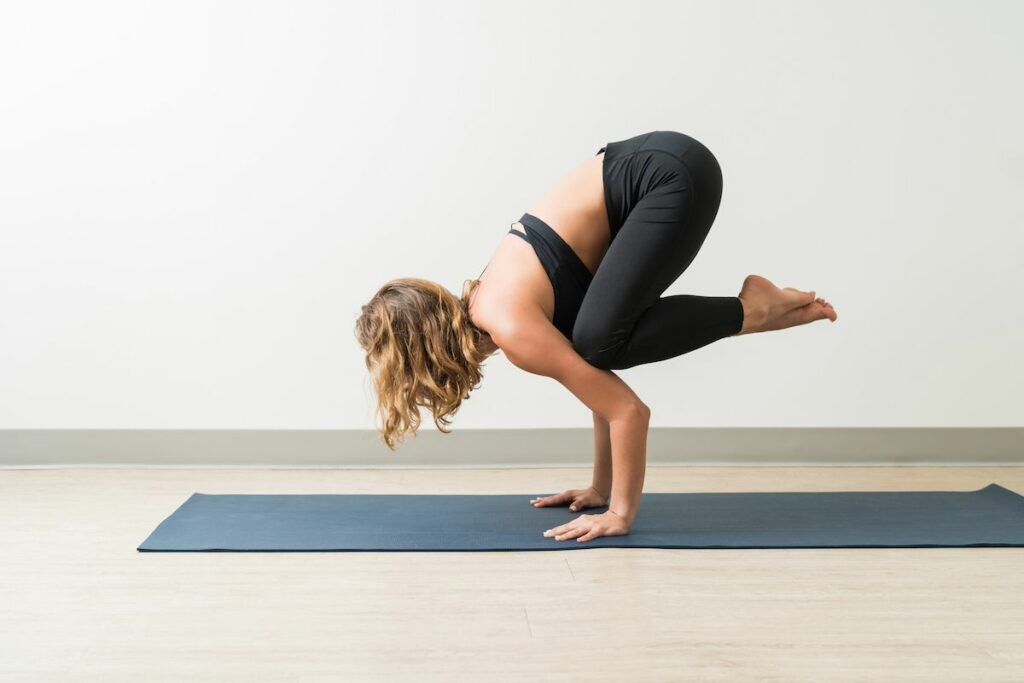
6 Boat Pose
Boat pose is THE pose for building core strength, something that is essential for many intermediate and advanced poses, including balances and inverted postures. It also works the glutes and thighs as you hold the legs in a raised position. Here's how to do Boat pose:
- From a seated position (four-limbed staff pose), bend your knees, bringing your hands behind your thighs.
- Keep your back straight and core muscles engaged as you float both feet on the floor, raising the lower legs to a parallel position from the ground.
- Slowly extend your arms by your sides, and try straightening your legs.
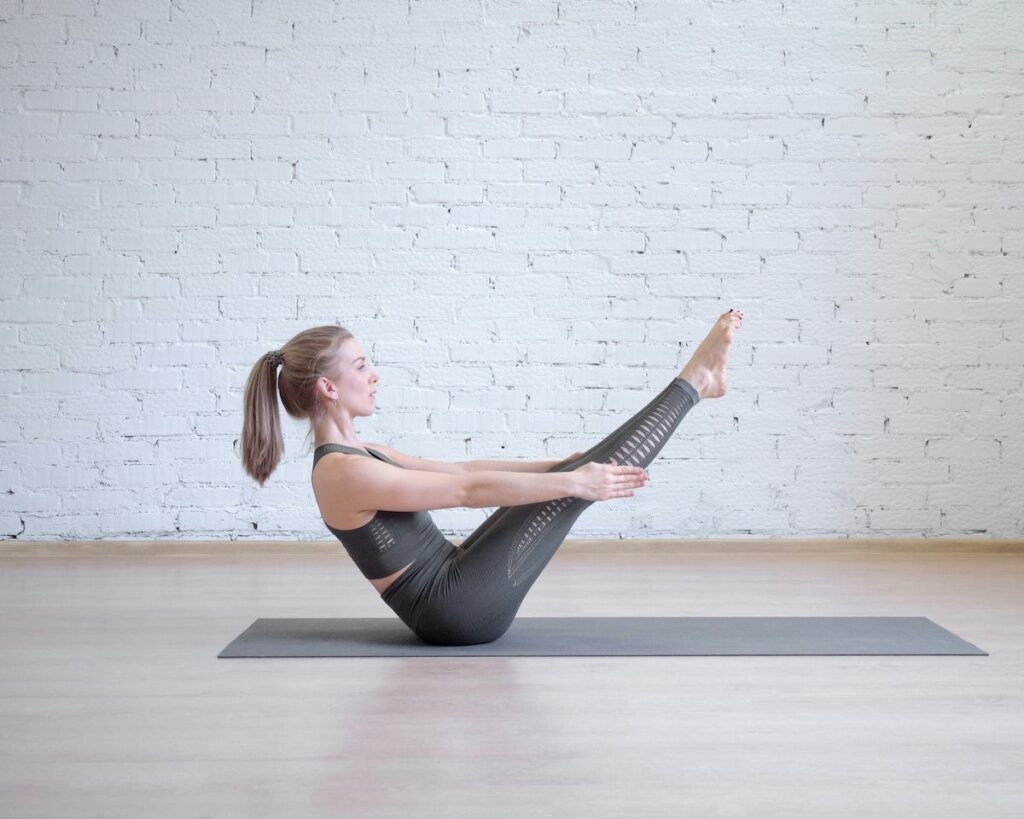
2. Triangle Pose
Triangle pose strengthens the core (especially the obliques) and many leg muscles, including the external rotators. It also fortifies the ankle and knee joints and powerfully works the back muscles while holding yourself in this tilted position. Here's how to do Triangle pose:
- From a standing position, step your right foot back, turning the foot out to a 45-degree angle (heels aligned).
- With the hips and chest facing the side, extend your arms, bringing them parallel to the ground with the palms facing down.
- Look to your left hand. Reach the arm forward on an inhale, like someone is pulling your hand. On the exhale, tilt from the hips to bring the left arm down, placing your hand on your inner shin or a block.
- Draw your top shoulder back to open the chest as you look at your top hand.
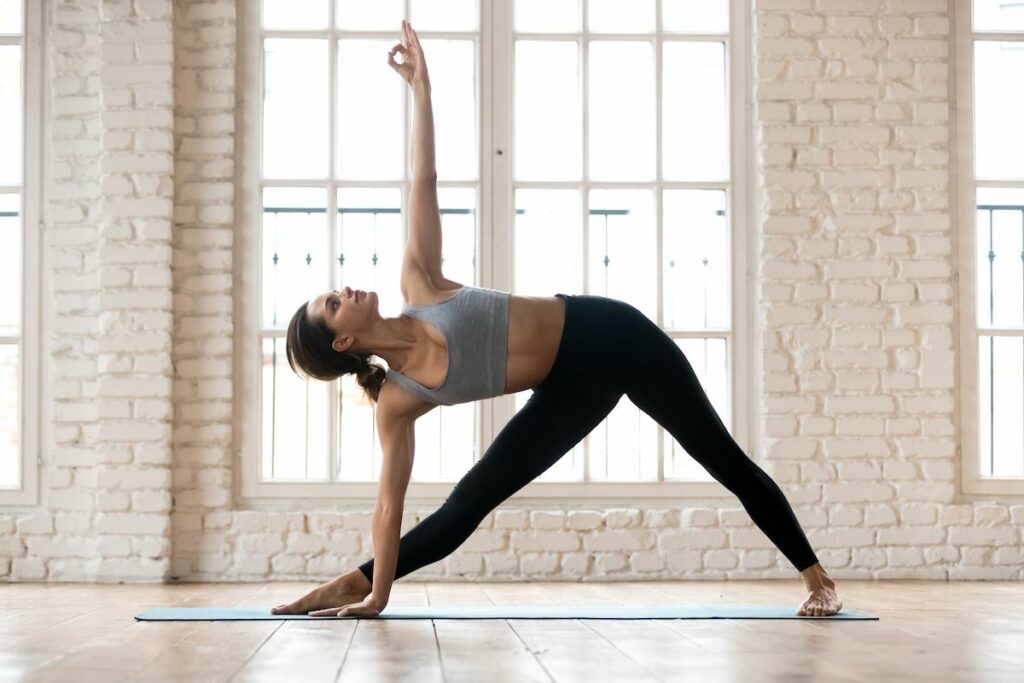
3. Warrior 2
Warrior 2 is one of the best poses for building leg strength. It engages many muscles in the lower body, including the hip flexors, gluteal muscles, and inner thighs. Plus, the shoulder and core muscles work deeply as you hold your arms outstretched. Here's how to do Warrior 2:
- From a standing position, step your right foot back into a wide stance, turning the foot out to a 90-degree angle. The front heel should align with the arch of the back foot.
- Bend your front knee to a 90-degree angle, stacking the knee over the ankle. Keep the back leg straight, pressing firmly into the back heel to engage the muscles in that leg.
- Open your hips and chest to the side as you extend your arms, bringing them parallel to the ground with the palms facing down.
- Look to your left hand as you hold the pose for 5 to 10 breaths.
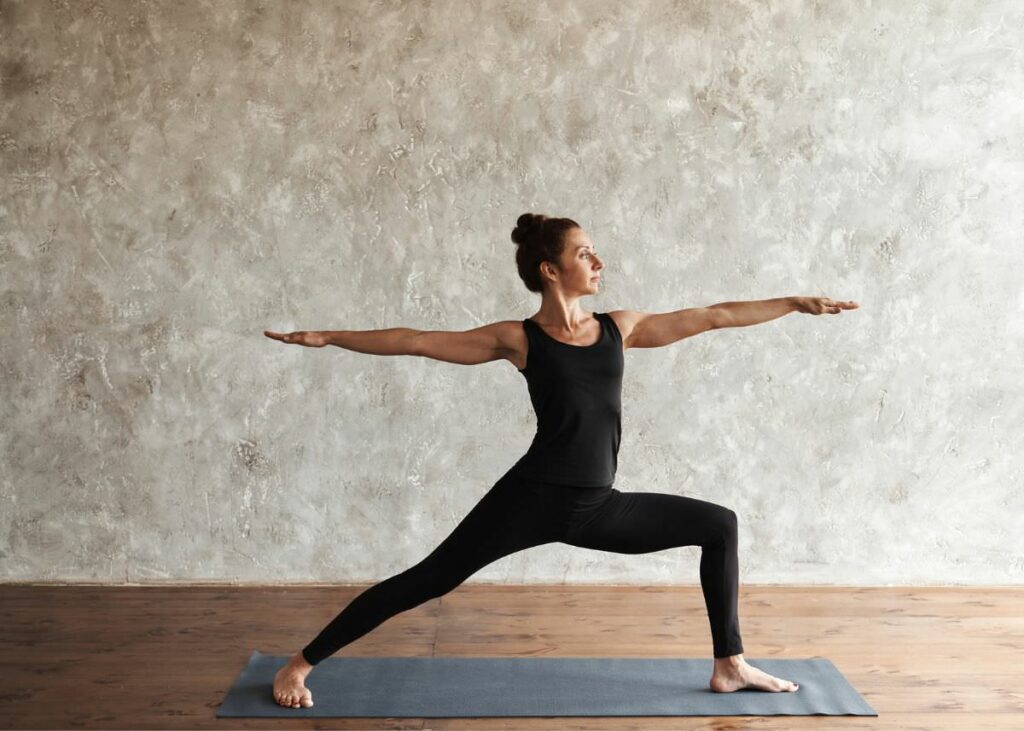
4. Warrior 3
Warrior 3 calls for solid engagement of all the muscles in the standing leg as well as other muscle groups like the abdominals. Here's how to do Warrior 3:
- From a standing position, shift your weight into your left leg.
- Press firmly into your left foot as you extend your right leg back and lower your upper body forward, bringing the leg and body into one straight line (forming the shape of the letter T).
- Engage your abdominal muscles for balance and stability. Extend your arms by your sides (pointing behind you), out to the side, or forward.
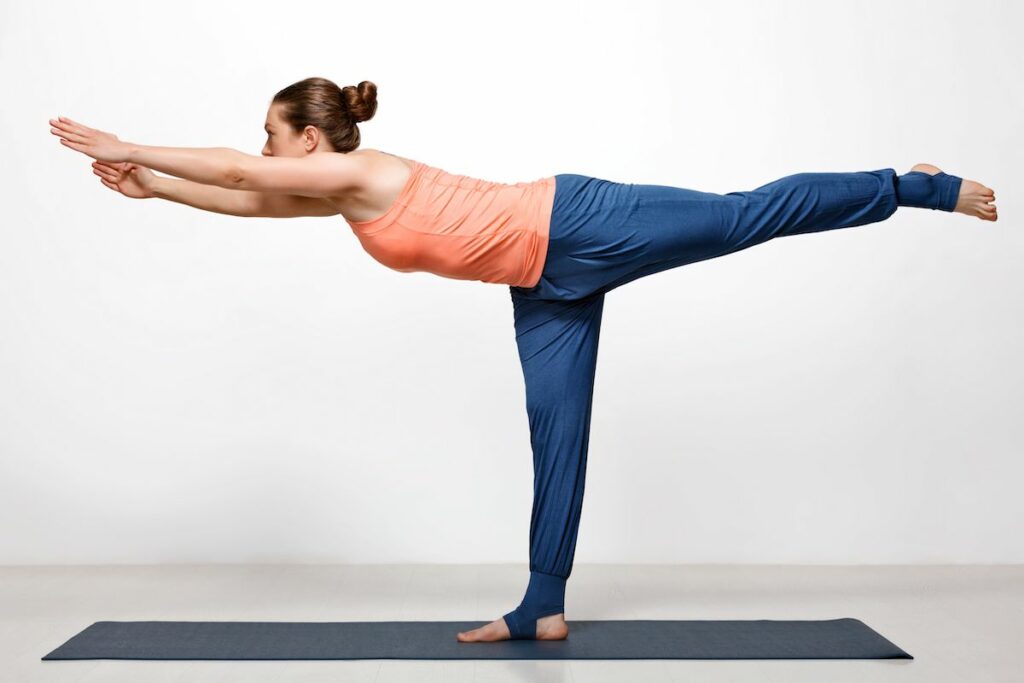
5. Chair Pose
Chair pose involves sinking the hips with the knees bent like you are sitting on a chair, which is incredibly strengthening for the buttocks and thighs. However, as the pose requires you to hold your arms overhead in a straight line, you quickly feel how much your arm muscles are working, too. Here's how to do Chair pose:
- From a standing position with the feet together, bend your knees to sink your hips.
- Ensure you can still see your toes when you look down. Do not go so low that your knees go past your toes.
- Keeping a strong and stable position in the lower body, reach your arms overhead with the palms facing each other and elbows hugging each other.
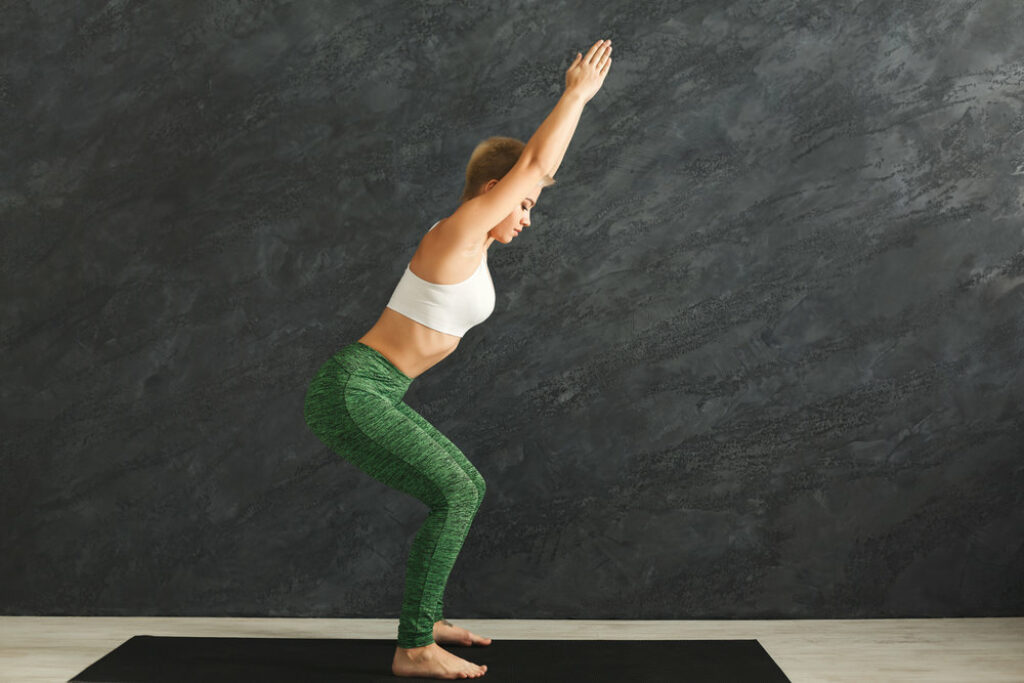
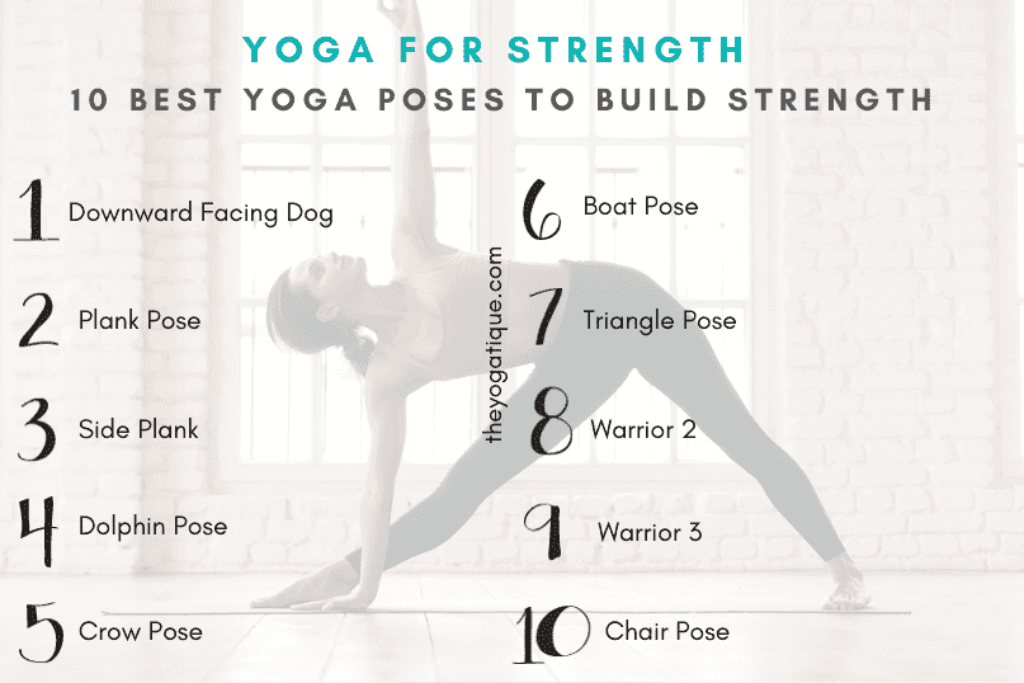
Can you build muscle from just yoga?
If you're currently not doing any other form of exercise, you will likely see significant strength-building results through yoga alone.
More and more research studies show that yoga alone can significantly improve muscular strength and cardiorespiratory fitness.
Dynamic styles of yoga like Vinyasa flow, Ashtanga, and power yoga are the best for building strength. But styles where you hold the poses for some time, such as Hatha and Iyengar are also good for getting stronger.
How long it takes to get stronger from yoga
Many experts say it takes between 4 and 8 weeks of daily yoga practice to see and feel a noticeable difference, and in my experience as a yoga instructor, I agree.
One research study found that practicing yoga three times a week is sufficient for building strength. This was determined by measuring the participants' progress in chair stands and arm curls.
With consistent and regular practice, you can develop lower and upper body strength, but you will not immediately notice the effects.
I've also observed two common reasons why people do not develop their desired strength through yoga:
- They don't practice consistently – They come to one or two yoga classes a week and do not practice at home in between classes. Or they start with good intentions, attending multiple sessions for the first few weeks. But around week three, I see many people lose motivation and start skipping classes just before the results come.
- They give up too quickly – They expect immediate results, and after a couple of sessions, they give up. This is very common because if you start a dynamic yoga style when you are unfit, you will find it very challenging initially. The first few sessions may not be enjoyable because of this, but if you push through and don't give up, your yoga practice will soon become easier and more enjoyable.
So, if your yoga goal is to build strength, practice often, and be patient – if you can do this, the results will come!
Takeaway on yoga poses that build strength
While seeing and feeling your body becoming stronger can be a fantastic confidence and health boost, remember that building strength is just one of the many benefits that yoga practice offers.
Be sure to balance your strength training with lots of deep stretches and be mindful of proper alignment. I recommend dedicating the last 15 to 20 minutes of a 1-hour practice to increasing flexibility by working with relaxing floor postures. You may also like to incorporate more relaxing styles of yoga, like yin or restorative, once a week to ensure your body gets the proper recovery it needs.
Some online yoga studios, online yoga teacher training programs, and brands that we write about may offer us a small percentage should you decide to purchase after reading our content. Thank you for enabling us to exist!









